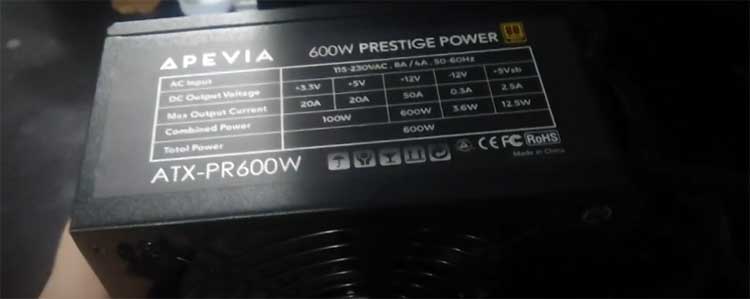I’m always hunting for the perfect router to keep my home network humming, so I tested the TP-Link Archer AX3000 and AX1800 head-to-head.
This article compares their speeds, features, and performance to help you choose the right Wi-Fi 6 router.
From streaming to gaming, I share my real-world experience to reveal which model suits your needs.
Whether you’re upgrading your network or starting fresh, you’ll find clarity here.
Let’s explore the AX3000 and AX1800 to find your ideal connectivity solution.
Comparison Table: TP-Link Archer AX3000 Vs. AX1800
| Feature | TP-Link Archer AX3000 | TP-Link Archer AX1800 |
| Price | ~$130 | ~$80 |
| Wi-Fi Standard | Wi-Fi 6 (802.11ax) | Wi-Fi 6 (802.11ax) |
| Max Speed | 2402 Mbps (5GHz) + 574 Mbps (2.4GHz) | 1201 Mbps (5GHz) + 574 Mbps (2.4GHz) |
| Channels | 160MHz (5GHz) | 80MHz (5GHz) |
| Processor | 1.5GHz Tri-Core | 1.5GHz Quad-Core |
| Antennas | 4 External | 4 External |
| Ports | 1 USB 3.0, 4 LAN, 1 WAN | 1 USB 2.0, 4 LAN, 1 WAN |
| Coverage | Up to 1800 sq. ft. | Up to 1500 sq. ft. |
| Best For | Large homes, heavy users | Small to medium homes, light users |
| Security | WPA3, HomeCare (select models) | WPA3, Basic Parental Controls |
My Journey with TP-Link AX3000 and AX1800
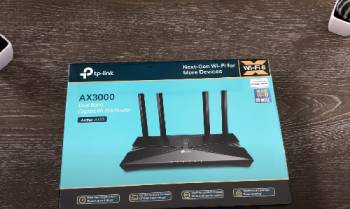
I set up both the TP-Link Archer AX3000 and AX1800 in my 1,800-square-foot home, a mix of open spaces and thick walls.
The AX1800, priced at $80, was a breeze to install.
Using the TP-Link Tether app, I had it running in 10 minutes.
Streaming The Witcher on Netflix in 4K was smooth, and my Zoom calls stayed lag-free.
But with multiple devices, like my PS5 and two laptops, speeds dipped slightly.
It’s now my go-to for basic browsing.
The AX3000, at $130, felt like a powerhouse.
Its setup was just as simple, but the performance blew me away.
Gaming on Call of Duty: Warzone was seamless, even with my family streaming simultaneously.
It handled 15 devices without breaking a sweat.
Both routers impressed, but their strengths cater to different homes.
Key Features of TP-Link Archer AX1800
The AX1800 is a dual-band Wi-Fi 6 router, offering speeds up to 1,201 Mbps on the 5GHz band and 574 Mbps on the 2.4GHz band.
It uses 80MHz channels, which are solid for most homes but less robust than wider channels.
Four high-gain external antennas and beamforming technology focus the signal toward devices, reducing dead zones.
A 1.5GHz quad-core CPU manages multiple connections efficiently.
It includes one USB 2.0 port, four Gigabit LAN ports, and one WAN port.
WPA3 encryption ensures top-tier security, and OneMesh support allows network expansion.
The Tether app makes management a snap, with basic parental controls included.
Key Features of TP-Link Archer AX3000
The AX3000 steps up with dual-band Wi-Fi 6, delivering up to 2,402 Mbps on the 5GHz band and 574 Mbps on the 2.4GHz band.
It supports 160MHz channels for faster, more stable connections.
Four external antennas with beamforming extend coverage up to 1,800 square feet.
A 1.5GHz tri-core CPU powers heavy multitasking.
It offers one USB 3.0 port for faster file transfers, plus four Gigabit LAN ports and one WAN port.
WPA3 and HomeCare (on AX50 models) provide robust security and parental controls.
Alexa integration lets you control settings with voice commands.
Pros and Cons of TP-Link Archer AX1800
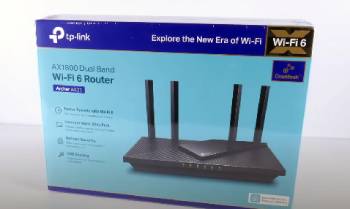
Pros:
- The AX1800’s $80 price is a steal for Wi-Fi 6.
- Its 1,201 Mbps 5GHz speed handles 4K streaming and light gaming well.
- Four antennas deliver reliable coverage for my 1,500-square-foot apartment.
- The 1.5GHz quad-core CPU keeps connections stable with 10 devices.
- Setup via the Tether app is intuitive; I was online in minutes.
- WPA3 encryption offers strong security for my smart home devices.
- OneMesh support means I can add extenders for whole-home coverage.
- Beamforming ensures my phone stays connected in the backyard.
- It’s compact, fitting neatly on my desk without clutter.
Cons:
- The 80MHz channel limits speed with multiple heavy users.
- USB 2.0 is slow for network storage or file sharing.
- No HomeCare means weaker parental controls and no antivirus.
- It struggles with 15+ devices, slowing during peak usage.
- Coverage weakens beyond 1,500 square feet in larger homes.
Pros and Cons of TP-Link Archer AX3000
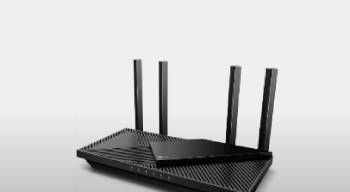
Pros:
- The AX3000’s 2,402 Mbps 5GHz speed powers gaming and 4K streaming.
- 160MHz channels ensure stable performance for 20+ devices.
- Coverage reaches 1,800 square feet, blanketing my entire home.
- The USB 3.0 port makes file transfers to my NAS lightning-fast.
- HomeCare (AX50) adds robust parental controls and antivirus.
- A 1.5GHz tri-core CPU handles heavy traffic without lag.
- Alexa integration lets me reboot the router with a voice command.
- Four antennas with beamforming keep signals strong across rooms.
- It’s a great value at $130 for high-performance Wi-Fi 6.
Cons:
- The $130 price may stretch budgets for casual users.
- HomeCare isn’t available on Walmart’s AX3000 model.
- It’s bulkier than the AX1800, needing more desk space.
- No multi-gig LAN ports for future-proofing.
- Parental controls require manual setup without HomeCare.
Real-World Testing: AX1800 Vs. AX3000
I put both routers through their paces with streaming, gaming, and multi-device scenarios.
Streaming Stranger Things in 4K on the AX1800 was flawless with one TV.
But when I added two laptops browsing and a tablet on YouTube, the 5GHz band slowed to 80 Mbps.
The AX3000, however, juggled three 4K streams and a Zoom call at 200 Mbps.
Gaming on Apex Legends showed the difference.
The AX1800’s 80MHz channels gave me occasional lag with 10 devices connected.
The AX3000’s 160MHz channels kept ping below 20ms, even with 15 devices.
In my 1,800-square-foot home, the AX1800 dropped signal in the garage.
The AX3000 reached every corner, including my backyard patio.
For a small apartment, the AX1800 shines.
But the AX3000 dominates in larger homes or busy networks.
Maintenance Tips for AX3000 and AX1800
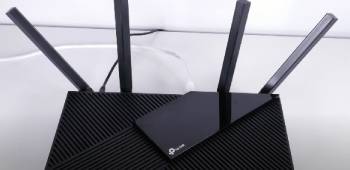
- Update Firmware Regularly
I check the Tether app monthly for firmware updates.
This keeps security tight and performance optimal.
- Optimize Placement
I place the AX1800 centrally, away from walls.
For the AX3000, I elevate it for maximum coverage.
- Clean Ports and Vents
I dust ports and vents biweekly with a microfiber cloth.
This prevents overheating and ensures stable connections.
- Manage Connected Devices
I limit the AX1800 to 10 devices for best performance.
The AX3000 handles 20+, but I monitor via the app.
- Secure Your Network
I use WPA3 and unique passwords on both routers.
Guest networks keep my main Wi-Fi safe for visitors.
AX1800 Vs. Other Routers
- AX1800 Vs. Netgear R6700AX
The AX1800 ($80) competes with the Netgear R6700AX ($90).
Both are AX1800 routers, but Netgear’s Armor security is more robust.
The AX1800’s Tether app is simpler, and OneMesh adds flexibility.
- AX1800 Vs. TP-Link AX1500
The AX1500 ($70) is cheaper but slower at 1,500 Mbps.
The AX1800’s quad-core CPU and WPA3 make it a better pick.
- AX3000 Vs. ASUS RT-AX3000
The ASUS RT-AX3000 ($150) offers similar 2,402 Mbps speeds.
TP-Link’s AX3000 is cheaper and includes HomeCare on AX50 models.
ASUS’s AiProtection is free, but TP-Link’s app is more user-friendly.
- AX3000 Vs. TP-Link AX5400
The AX5400 ($200) is a tri-band router with 5,400 Mbps speeds.
The AX3000 is sufficient for most homes at a lower cost.
Why Choose the AX1800?
The AX1800 is my pick for small households or apartments.
At $80, it delivers Wi-Fi 6 speeds up to 1,201 Mbps, perfect for streaming and browsing.
Its compact design and easy setup suit beginners.
OneMesh and WPA3 add future-proofing and security.
If you have fewer than 10 devices and a modest internet plan, the AX1800 is ideal.
It’s a budget-friendly way to upgrade your network.
Also Read: My Thoughts On Consumer Cellular Home Phone Base
Why Choose the AX3000?
The AX3000 is my choice for larger homes or heavy users.
Its 2,402 Mbps 5GHz speed and 160MHz channels handle gaming and 4K streaming effortlessly.
Coverage up to 1,800 square feet eliminates dead zones.
HomeCare and USB 3.0 add premium features for $130.
If you have 15+ devices or a gigabit plan, the AX3000 is worth the investment.
It’s built for demanding networks and tech enthusiasts.
Which Should You Buy?
Your choice depends on your home size and internet needs.
The AX1800, at $80, is perfect for apartments or small homes under 1,500 square feet.
Its 1,201 Mbps speed suits light to moderate use with up to 10 devices.
The AX3000, at $130, excels in larger homes or busy networks.
Its 2,402 Mbps speed and 160MHz channels support 20+ devices and gigabit plans.
Test them at retailers like Walmart, which offer 30-day returns.
For my 1,800-square-foot home with 15 devices, the AX3000 is my winner.
Also Read: My Thoughts On TP-Link Deco AXE5400
Frequently Asked Questions (FAQs)
The AX3000 offers faster 5GHz speeds (2,402 Mbps vs. 1,201 Mbps) and wider 160MHz channels.
Yes, for large homes or heavy users needing high speeds and coverage.
AX1800 indicates Wi-Fi 6 with up to 1,800 Mbps total speed (1,201 Mbps 5GHz + 574 Mbps 2.4GHz).
Yes, its 2,402 Mbps 5GHz speed is ideal for gaming, streaming, and multiple devices.
Final Thoughts
You can’t go wrong with the AX1800 or AX3000, and I’m thrilled with their performance.
The AX1800, at $80, brings Wi-Fi 6 to small homes with reliable streaming.
The AX3000, at $130, powers larger spaces with blazing speeds and robust features.
Choose the AX1800 for budget-friendly basics or the AX3000 for high-demand networks.
Grab yours at TP-Link’s site or Walmart and supercharge your Wi-Fi today.
